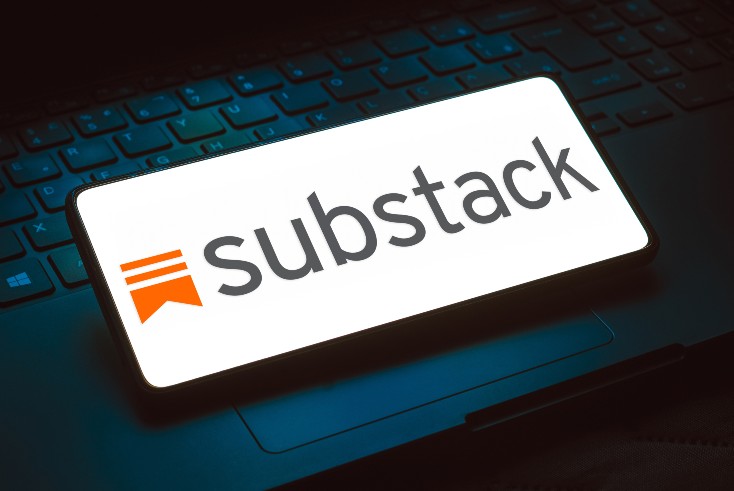Why Substack wants to be a live streamer

Substack is rolling out live video on its mobile app, allowing creators on the platform to host live streams for their subscribers.
Going live will immediately notify a user’s subscribers via a push notification. The intent, as described by Substack product manager Zach Taylor, is to allow writers to break news, share behind-the-scenes footage, and offer exclusive events, webinars or interactive AMAs (“ask me anything”).
Live videos can be paywalled, and users can collaborate with other creators to co-host a livestream.
“Live video arrives as more writers and creators use Substack to reach their subscribers while events unfold, often hosting dynamic conversations about breaking news and live events via Chat,” Taylor described in a blog post. “With publishers requesting ever-richer ways to connect, live video provides a new way to meaningfully engage with your audience.”
Livestreaming is currently available on iOS and Android only to Substack creators that are classified as “bestsellers” — writers with large followings exceeding hundreds of paid subscribers. The feature will later be rolled out to all users “in the coming months”, and non-bestsellers can request access early.
Analysis: A ‘pivot to video’ moment
The new feature comes as Substack has sought to give creators more video tools in recent years, incentivising users to engage with audiences in various media formats.
Indeed, in a 2022 interview with The New York Times, Substack executives expressed their long-term development goal for the platform was to have users create “personal media empires” across text, video and audio products.
Substack first began offering videos on the platform in January 2022. Last autumn, it added a slew of new video features for creators, including the ability to publish video podcasts and create flexible paywalls for video posts. Additional features include the ability to create custom shareable clips, AI-generated transcripts, and improvements to homepages to highlight videos.
Now with livestreaming, Substack is leaning even further away from its own original unique selling proposition — its promotion of writers and their written material, accessible in newsletter format and online.
“RIP Substack writers,” commented Substacker Jubei Raziel on Taylor’s blog post.
Other Substackers were much more positive, however, arguing the new tools offer an exciting new way to reach audiences on top of posting written articles.
Still, by promoting multimedia tools like livestreaming, Substack is arguably becoming more like other forms of social media, with direct appeals to the burgeoning creator economy thanks to a greater emphasis on high-attention mediums like video.
The new feature also places it into competition with the likes of YouTube and Amazon’s Twitch, whose “Just Chatting” livestreaming category is regularly among its most popular.
Competitive marketplace
But the move into new forms of multimedia output may well be necessary given Substack’s original USP — apart from its large community of users — has been eroded by stiff competition from the likes of open-source competitor Ghost and newsletter platform Beehiiv.
The company has also previously struggled to raise additional capital from investors amid a rise in interest rates and subsequently had to lay off staff in 2022. While Substack does not report public finances, the company reportedly earned negative revenue in 2021.
Such business pressures make competing for growth in the lucrative attention economy more of a necessity.
This February, the company announced it had surpassed 3m paid subscriptions across its various newsletters, up from 2m the year prior.
Substack has also faced other headwinds, coming under criticism for its stance on free speech. Last December, co-founder Hamish McKenzie said Substack would not ban Nazi content or extremist speech on its platform, writing: “We don’t think that censorship (including through demonetizing publications) makes the problem go away.”
Are brands overspending on social? With EssenceMediacom’s Richard Kirk and Olga Zaitseva
Some writers, such as tech journalist Casey Newton, then decided to leave the platform in favour of Ghost. Newton said he did not want to support a platform that profits off of hateful speech.
Popular UK local media outlet Mill Media, which runs the Manchester Mill and other sister titles, also recently announced it would be leaving Substack for Ghost. Founder Joshi Herrmann stressed in an interview with Press Gazette that the move was not acrimonious but rather aimed at cutting costs (Substack takes 10% of subscription revenue earned by newsletters on the platform) and gaining more direct control over Mill Media’s audience.
A number of hugely successful startups remain on Substack. Zeteo, Mehdi Hasan’s alternative news outlet founded in February of this year, currently counts over 246,000 subscribers.
Not only does it publish news and columns from a slew of respected journalists including John Harwood, Naomi Klein and Justin Baragona, but it also publishes videos, too.




